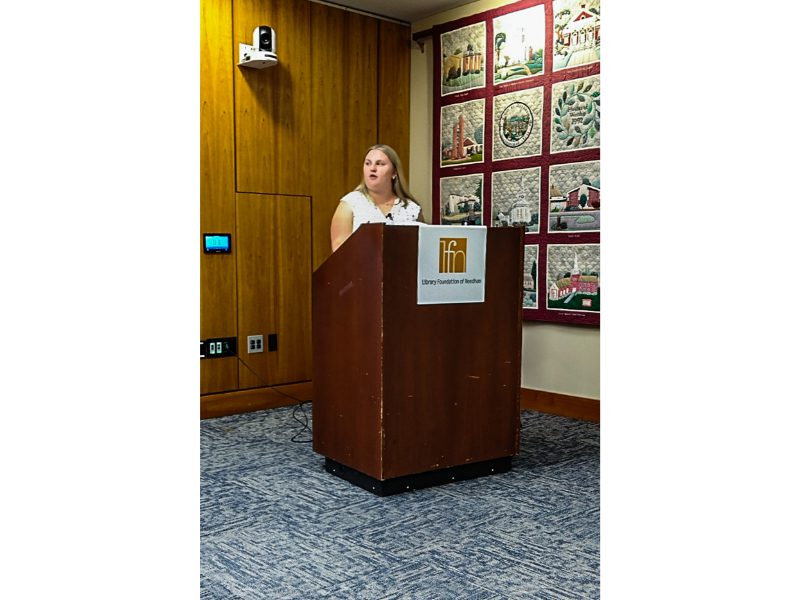By Audrey Anderson
Hometown Weekly Reporter
Needham native and Boston University Journalism Senior Bella Gonzalez shared her research into the positive and negative effects of artificial intelligence (AI) and how to identify AI fakes, as she presented her evening program in the NFPL’s Community Room.
Gonzalez started her presentation by sharing an example of a $25 million scam committed with the help of AI. At a finance department video meeting, an attendee asked for $25 million dollars in 15 separate transactions. Many of the people in the video meeting were deep fakes created with generative AI. Even though the request was suspicious, it was approved, since no one on the call seemed to object. The deep fakes were videos of company employees that utilized computer-generated speech.
After sharing this example of AI used for fraudulent purposes, Gonzalez also said that AI can be used for positive purposes as well, especially in circumstances where pattern recognition or repetitive steps are required. For example, AI can be used in medical diagnosis and treatment, assistive devices for the disabled, and improved transportation. Also, AI can summarize a group of emails, create an itinerary, or list options within certain parameters, saving people a lot of tedious work.
Gonzales traced the history of sharing ideas from the written word to the printing press to the computer. Each step allowed wider sharing of ideas and faster learning. Gonzalez said that AI is the latest development in this chain. According to a quote from IBM shared by Gonzalez, AI is “tech that enables computers and machines to simulate human learning, computation, problem solving, decision making, creativity and autonomy.” AI is already being used in many computer programs and social media applications.
As AI develops, it will become more accurate and fool us more easily. It is important to be able to spot AI to avoid negative consequences, such as mis- or disinformation and fraud. For the moment, there are some telltale signs one can consider in determining if a video or photo was created with AI.
Gonzalez suggested looking for signs of AI or fake videos and images, such as facial inconsistencies (skin, eyes, excessive blinking or monotone delivery), misshapen hands and fingers, or inappropriate or strange tone of voice, speed of speech, or lip movements. Other signs are faulty imitation of text or inconsistent, unnatural lighting. One option to help with AI detection is to copy and paste suspected fake images into https://sightengine.com.
Attendees brought up intriguing questions about AI, such as how can we avoid errors in AI-generated results? Should we cite AI as a source in research papers? Should we consider images created by AI as art, and who is the artist? Does a human interaction or query with AI contribute to a creative product? According to Gonzalez and her professor Noel Graves, these difficult questions will take some time to answer.
In the meantime, as Gonzalez shared in a quote from TechRound, “The best defense is to stay sharp, ask questions, and never take things at face value.”






















